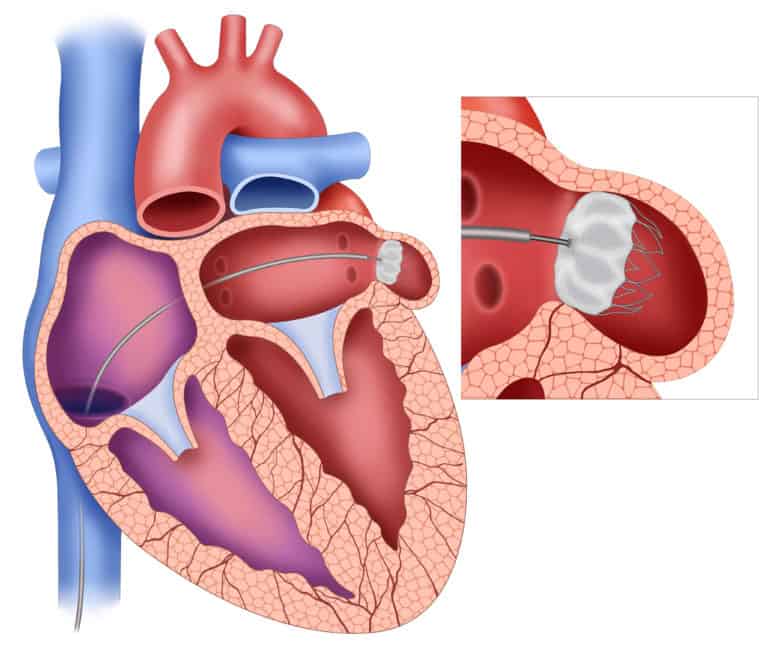Left Atrial Appendage Occlusion
Some patients with atrial fibrillation have a particularly high risk of stroke but also a significant risk of bleeding, for example where there is a history of a prior bleed in the bowel or brain, recurrent and severe nose bleeds, and in blood and liver disorders. This unsatisfactory and potentially dangerous position had to be accepted until the more recent development of mechanical devices which can block off the left atrial appendage (LAA), the most common site of clot formation, and so markedly reduce the risk of embolic stroke.
The most studied device is the WATCHMAN, which can be inserted via keyhole surgery into the heart. The WATCHMAN device is a self-expanding frame structure with tiny barbs to help anchor it in position and a permeable polyester fabric that covers the atrial facing surface of the device. The device is preloaded within a delivery catheter, which is passed from the femoral vein at the top of the leg to the heart and then across the interatrial septum, which separates the right and left atria, and positioned in the left atrial appendage where it is deployed and the catheter removed. The procedure takes about one hour and is undertaken under local anaesthesia with conscious sedation or general anaesthesia. Patients can usually expect to be discharged the following day in most cases. Boston Scientific, who created the WATCHMAN device have produced a short video demonstrating the procedure, which can be viewed here.
Studies of the WATCHMAN device have been encouraging and more techniques working along these lines are in development. The latest analysis of the PROTECT-AF trial comparing the WATCHMAN device to warfarin showed that it is certainly a viable alternative in patients who cannot take anticoagulants.

Related links:
Symptoms - Palpitations, Dizzy Spells and
Blackouts
Palpitations are a common symptom that may or may not signify an important underlying heart problem. Read more
Conditions - Atrial Fibrillation
Atrial fibrillation (often abbreviated to “AF”) is a very common heart rhythm disturbance, affecting over a million people in the UK. Read more
Tests - ECG Monitoring
There are several different types of ECG monitoring, chosen based on symptoms or the condition in question. Read more
Medical Therapy - Atrial Fibrillation
When the atria fibrillate, they no longer contract in a mechanically useful way, causing a degree of stagnation to blood flow and predisposing to clot formation within the chambers, and in particular within a finger-like projection called the left atrial appendage. Read more
Treatments - Ablation
The role of ablation in the treatment of various abnormal heart rhythms has evolved over the last two decades and now has an established place in the management of various arrhythmias, the most common of which is atrial fibrillation. Read more